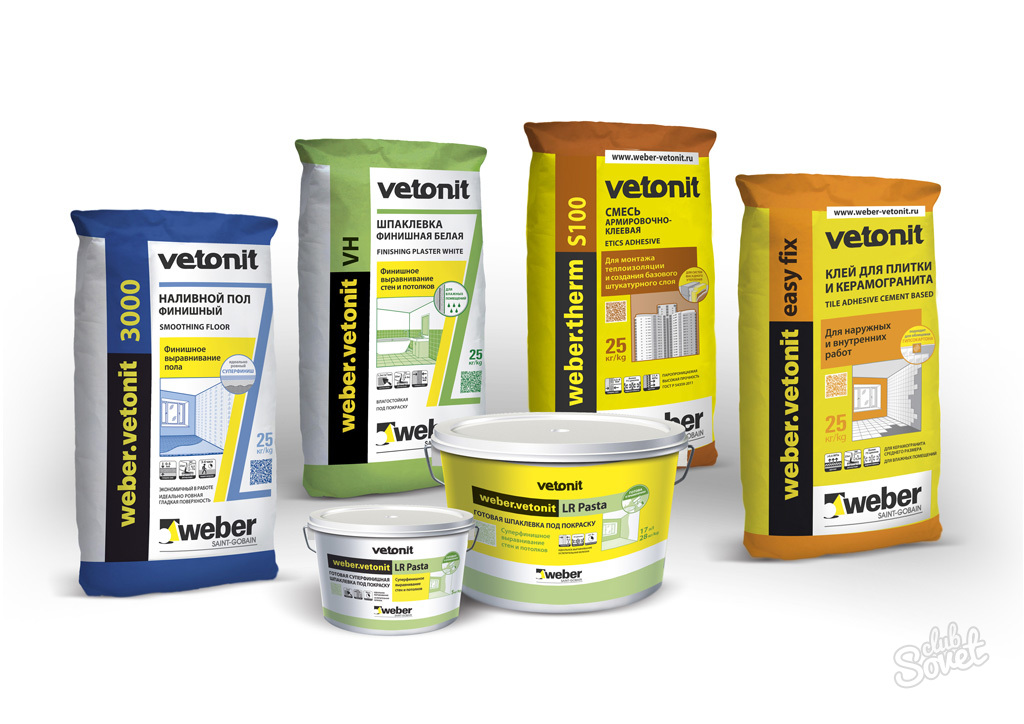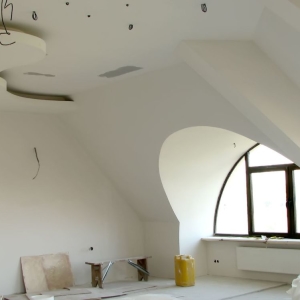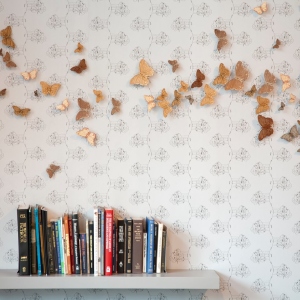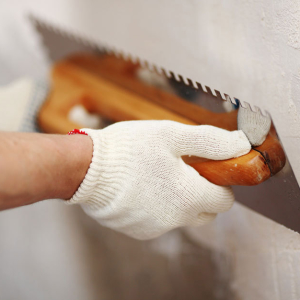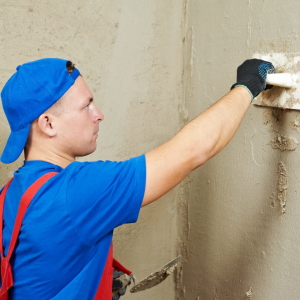The correct selection of the leveling or primer putty is determined by the material of the wall and the specifics of the use of the product. Manufacturers produce a variety of mixtures designed for various works.
Fundamental classification:- Gypsum putty are well aligned and not exposed to shrinkage, it is inexpensive and environmentally friendly, but they are destroyed under the action of moisture and are applied only with internal work.
- Cement putty - provide durable surfaces, perfectly opposing water and frosts, are used on facades and in wet premises, lack are prone to cracking after applying.
- Polymer sticks based on acrylic - plastic and easily laid mixtures with a wide range of applications, sold in finished form and undemanding to application technology, but have a high cost.
- Polymer latex putty - differ from acrylic greater elasticity and stability to loads, apply even on metal surfaces, disadvantage - the resulting "rubber" coating does not let the air.
- Oil-adhesive putty are suitable for plastered wooden walls of chulans, kitchens and other rooms, where the finish is more technical, not decorative.
- Starting putty - high-strength mixtures with good adhesion and large graininess are intended to align plaster layers up to 20 mm.
- Finishing formulations - used for decorative finishing and creating a perfectly smooth layer with a thickness of up to 4 mm.
- Universal mixtures - combine the properties of previous varieties, cost more expensive, are used on walls with small defects.
- "Knauf-Fumen" - a repair mix for joints and sticking of drywall;
- "KNAUF-UNIFLOT" is a higher product adhesive composition with similar use;
- "Knauf-Rotband-Finish" is a real good putty;
- "Knaft-multi-finish" - happens on plaster and cement bases.
- Ceresit CT-127 - polymer mixture for dry premises;
- "Ceresite ST-225" is a cement composition for exterior walls;
- Ceresit CT-95 - well suited for repair work.
- "Weber-Old VKH" - cement putty for any work;
- WEBER-VETONIT KR - a mixture based on organic glue;
- "Weber-Old LP" - allows you to make ready surface under the color.
- STABILL PG-41 - Easily rubs, after the kneading does not freeze two hours;
- "Stabilized PSTS-11" - the universal composition aligns walls under the wallpaper;
- Stabill PG-007 - ready putty in buckets.

Each packaging of products is supplied with a technical description with detailed explanations of its use. Neglecting the manufacturer's recommendations can be the main error in choosing the desired mixture for spit.
















